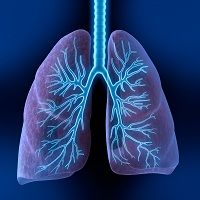Article
Identifying the Cause of Overproduction of Mucus in Airway Diseases
Author(s):
Researchers say over-expression of key proteins may cause the overproduction of mucus that is observed in airway diseases.

It is possible to counteract the inappropriate production of mucus in patients with asthma and chronic obstructive pulmonary disease (COPD), according to a study published in the journal eLife.
Researchers from Washington University School of Medicine in St. Louis built on the discovery of CLCA1 — a protein identified about 20 years ago – which is a known associate of the overproduction of mucus. Another protein called TMEM16A, discovered in mammals in the past decade, is believed to line the cells in the airway. But too much TMEM16A, similar to high levels of CLCA1, can cause the overproduction of mucus that is observed in airway diseases.
“Originally, CLCA1 was misidentified as a chloride channel,” the study’s senior author Thomas J. Brett, PhD explained in a press release. “When cells express CLCA1, they produce chloride currents. But as we became better at understanding the 3 dimensional structures of proteins, researchers in the field started to realize that CLCA proteins couldn’t be channels. So the question arose, how do they activate these currents if they’re not channels?”
The researchers were able to demonstrate the link between TMEM16A and CLCA1 and show that increased CLCA1 increases the number of TMEM16A channels present in nearby cells. The researchers believe their study is important because it can lead the way for further investigations into the larger families of these 2 proteins. There may be more interactions between the larger families of these 2 proteins which could expand the implications to other disorders such as cancer and cardiovascular diseases.
“We don’t think that CLCA1 actually opens the channel,” Brett said. “In fact, the channel can function without CLCA1. We think it simply keeps the channel on the surface of the cells for a longer period of time. The reason you get more current is you have more channels there. You’re just accumulating more holes for the ions to travel through. This is a unique finding. We don’t know of any other examples of this type of interaction between a protein and a channel.”
TMEM16 channels and CLCA proteins have been linked in previous research to breast tumors that can spread to the lungs, and in some cardiovascular disorders like irregular heart rhythms and heart failure. The authors believe their study can have a significant impact on this sphere of research.
“The new study lays the groundwork for developing treatments for diseases such as asthma, COPD, cystic fibrosis and even certain cancers,” Brett continued. “It also solves a 20 year mystery about the role of a protein that has long been associated with these diseases.”
In the future, the authors want to continue to study these interactions and investigate whether increasing or decreasing expression of the protein or the channel has an influence on the currents. They additionally want to examine what impact these changes can have in various airway diseases.
“In conditions leading to too much mucus, we may be interested in designing ways to block these currents or reduce them,” Brett concluded. “On the flip side, these channel currents may be able to compensate for the genetic defect in cystic fibrosis, which causes mucus that is too thick and sticky. In this case, we may be interested in activating them or dialing them up.”




